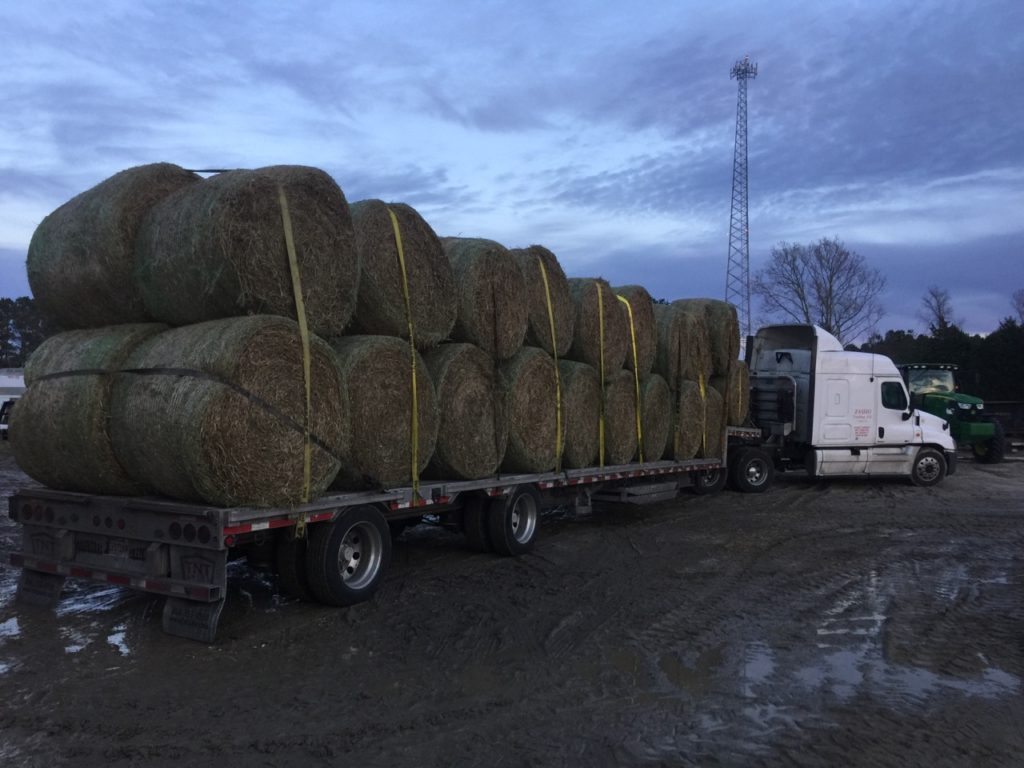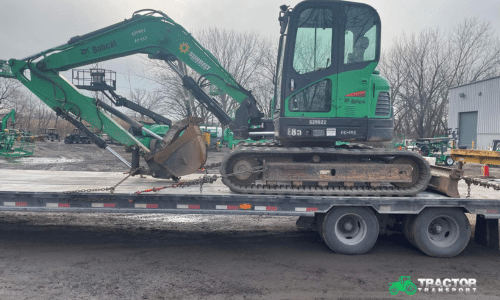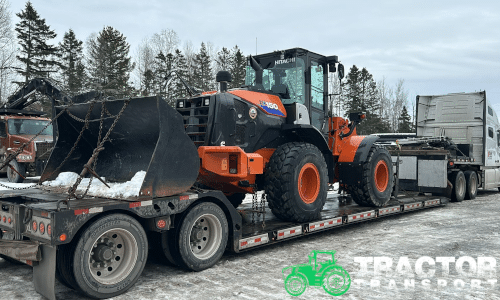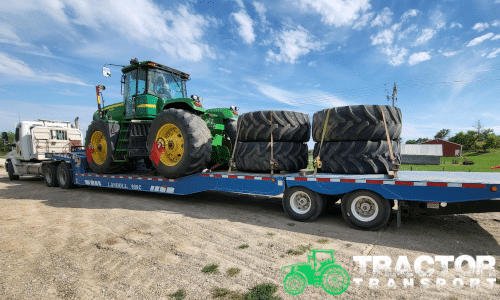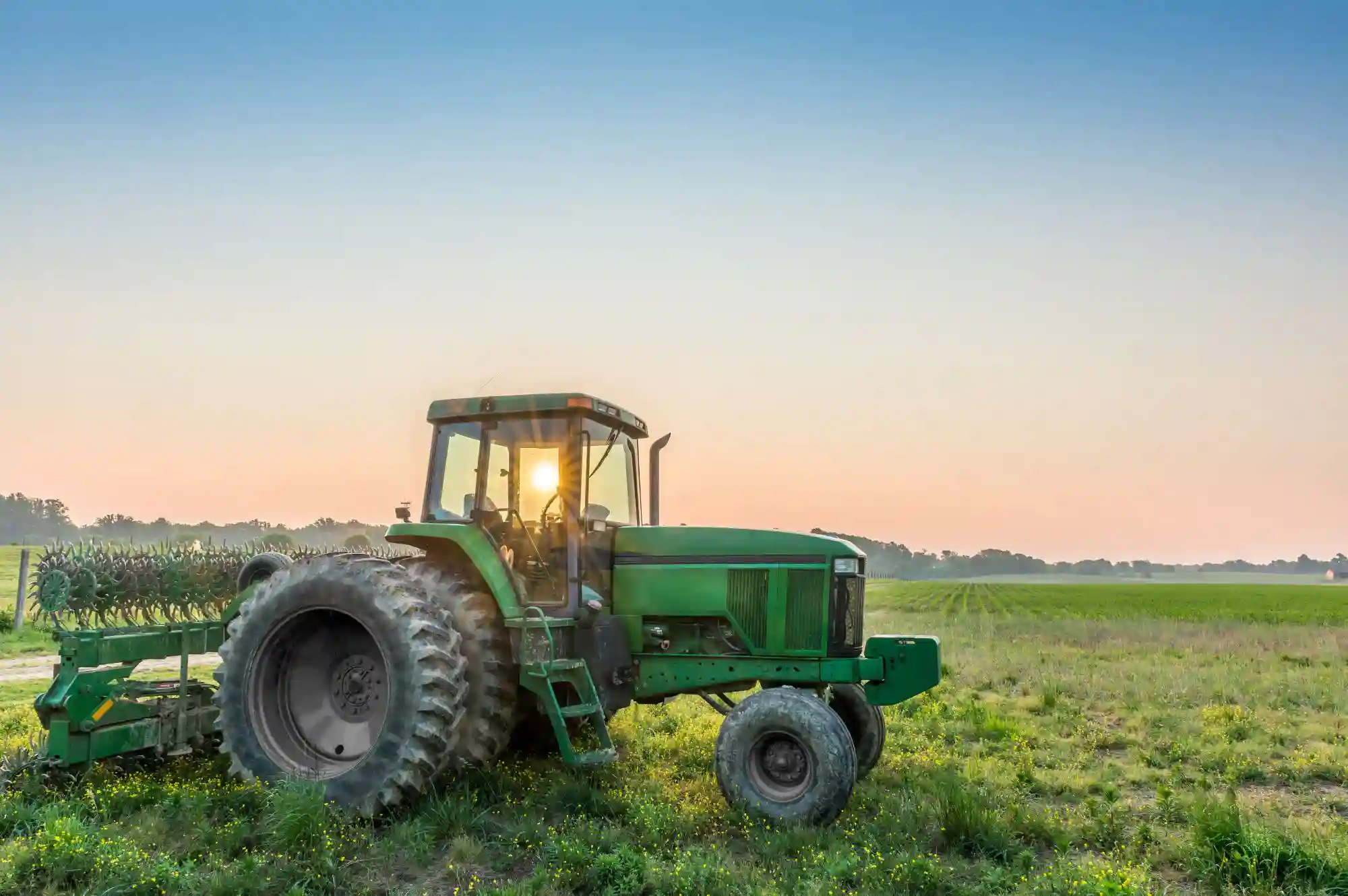
The Daily Bale
Hay Bale Types and How Many Fit On a Trailer
Speak To A Live Specialist
Hay Bale Types and How Many Fit On a Trailer
- 6 min read
- By: William Thomas
Shipping bales of hay may seem like a fairly straightforward proposition. However, as is often the case, reality can be very different from appearance. Hay, like most other specialty cargo, presents its challenges.
Hay bales come in various sizes, and no specialty trailers have been specifically designed for their transport. They are inherently unstable and offer a great deal of wind resistance. This makes safely loading hay and securing hay on a trailer difficult.
Still, hay is one of the unsung heroes of the American food chain. Its production and transport are vital to food production in the United States. Its systematic and efficient transport is key to meat production and the landscaping and gardening industries.
The Most Common Hay Bale Types
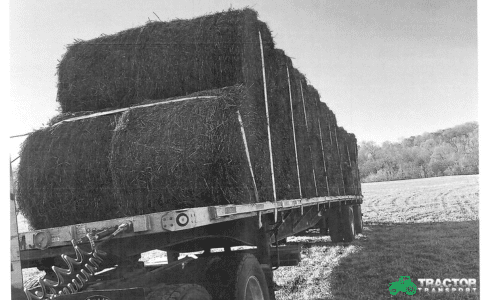
Hay is generally baled in one of two forms: round bales or square bales. However, these are just basic categories. Within each, there can be a massive difference in size and weight. Think of these terms as the classification K9. Are you talking about a Chihuahua or a Great Dane?
The most common sizes of square hay bales would be:
Two-string hay bales: 14″ high x 18″ wide x 35″ long1
Three-string hay bales: 16″ high x 22″ wide x 44″ long14
3′ x 3′ x 8′
3′ x 4′ x 8′
4′ x 4′ x 8′
6′ x 4′ x 3′
8′ x 4′ x 4′
Standard square hay bale: 22″ x 44″ x 16″
Standard size for a square bale of Timothy, alfalfa, or mixed grass hay: 14″ x 18″ x 36″
Round bales of hay are most commonly:
4′ x 4′
5′ x 4.5′
5′ x 6′
As can easily be imagined, hay bales also vary greatly in weight depending on the type of hay, the size of the bale, and its moisture content. Round bales can weigh anywhere from 400 to 1700 lbs, while square hay bales can range from 40 lbs to a ton.


When You’re Ready to Ship,
We’re Ready to Help
We handle every step of your equipment transport safely, efficiently, and on schedule, so you can focus on what matters.
The Most Common Types of Trailers for Hay Transport
For smaller loads of hay from farm to farm or around a farm, you may see all manner of trucks and trailers utilized to transport hay. For commercial operations, though, the options will generally be limited to one of three types of trailers for hay transport.
Trailers with no sides or roofs. They are basically a deck on wheels and can transport farm equipment, lumber, or other loads with odd shapes that aren’t too weather-sensitive.
Step-decks are similar to flatbeds, but the main deck is lower, allowing loads to be piled higher without air jamming. These are usually the best choice for hauling hay, feed, and other cargo that isn’t overly heavy but subject to shifting.
Lowboy trailers are most helpful if you need one trailer to transport your hay-making equipment and your hay. They ride very low to the ground, making it easy to load and unload hay-baling equipment.
The number of bales a trailer can carry greatly depends on the trailer’s size and the bales. But, as a general rule, a full-sized flatbed trailer can be expected to hold approximately:
410 – 14″ x 18″ x 36″ square bales
32 – 3 ‘x 3 ‘x 8’ square bales
18 – 4′ x 5′ x 5′ round bales
Other types of trailers will hold slightly less due to a lack of a working area.

GET AN EXPERT QUOTE FOR YOUR TRACTOR SHIPPING NEEDS
Fill out the form above for a FREE quote. Call us at (877) 373-0109 to connect with a transport specialist today!
Working With a Reputable Company To Ship Your Hay Bales
While moving hay bales around your farm may seem simple, taking it on the open road becomes a much different proposition. First, you need someone who knows how to load hay to maximize the trailer capacity yet be stable.
Safely loading hay involves more than just stacking it neatly. The wind resistance at highway speeds is much greater than most people realize. This makes securing hay on the trailer paramount to avoid loss. It also means understanding that the moisture level in the hay must be properly maintained. Hay that is too dry loses its nutritional value. Hay that is too wet risks spontaneous combustion.
In short, when it is time to transport your hay, you need a reputable company with the knowledge and experience to do it right.

America’s Trusted Farm Haulers
Safely and reliably hauling farm equipment nationwide since 2009.
Popular Articles

SERVICES
Tractor Hauling
We ship heavy and oversized tractors nationwide and to every state, including Alaska and Hawaii.
Trailer Shipping
We offer the best trailer to ship your farm equipment from flatbeds, RGNs, step decks, and more.
LTL Shipping
Your smaller farm equipment can share trailer space with other transports, often lessening costs.
Farming and Agriculture Transport
We offer custom farming and agriculture equipment transport solutions.
Drive-Away
A driver will get behind the wheel of your vehicle or equipment and drive it to the delivery destination.
International Transport
Ship your farm equipment to Canada or Mexico. We also offer port-to-port options for overseas shipping.
